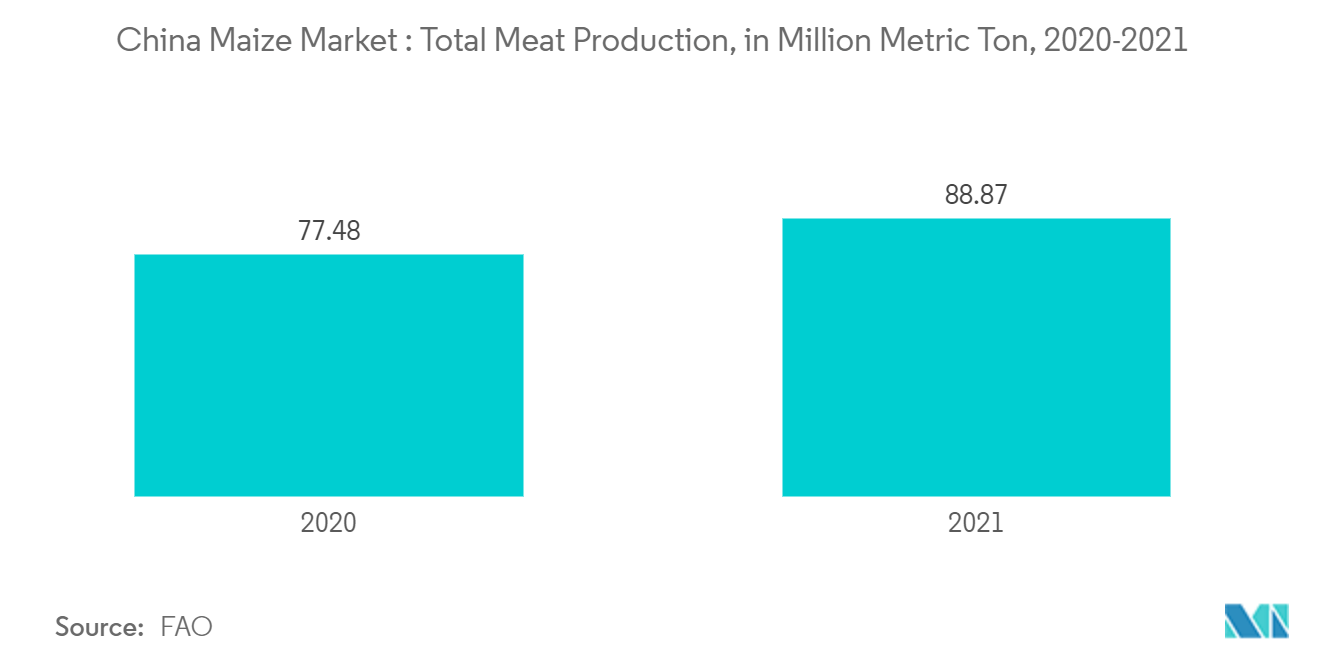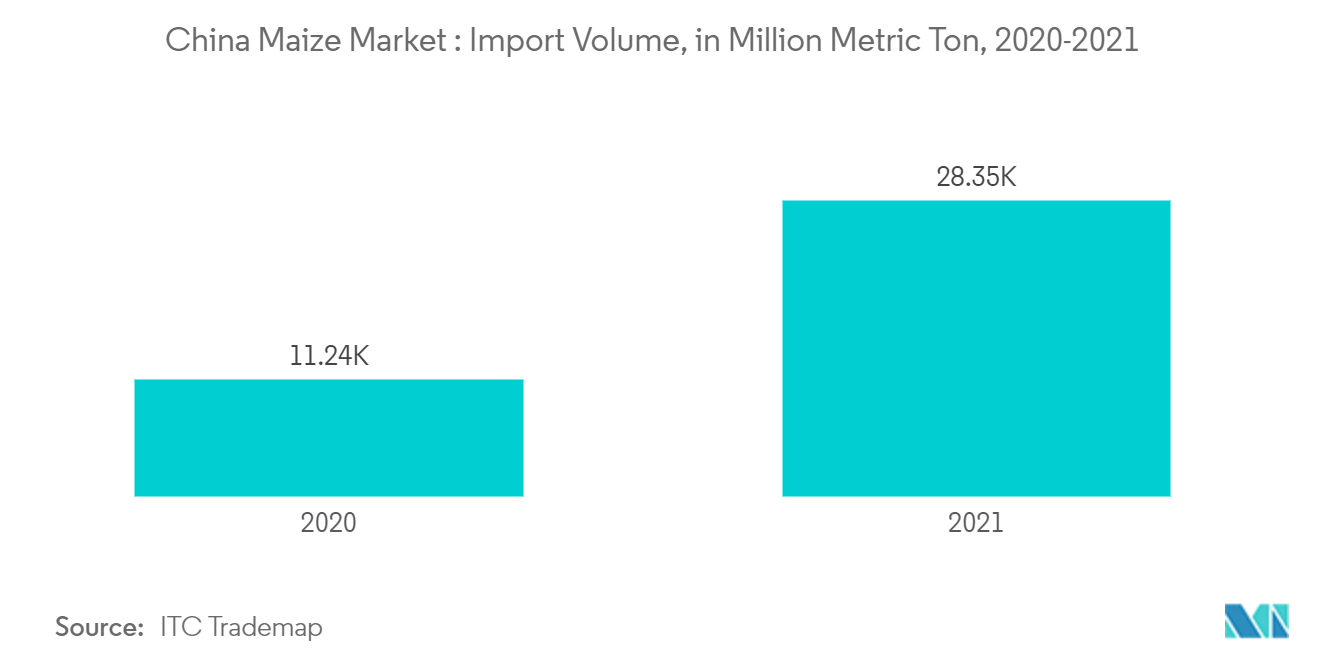Market Trends of China Maize Industry
This section covers the major market trends shaping the China Maize Market according to our research experts:
Increasing Demand for Corn as Animal-based Protein Sources
- China's commercial feed industry plays a crucial role in supporting the growth of corn in the region. Corn, predominantly used for animal feed, has surpassed wheat and rice to become China's largest crop. China is now among the world's largest producers of livestock products and animal feed manufacturers.
- The increase in domestic meat production has contributed to the growth of corn as animal feed in livestock production in the region. With an increase in demand for corn in the animal feed industry, the market for corn is projected to grow during the forecast period. According to the United States Department of Agriculture (USDA) report, China's 2021 chicken meat production was forecasted at 15.3 million metric tons, representing a 3% increase from the estimated 14.9 million metric tons in 2020.
- The 2021-22 feed corn and residual use forecast were 211 MMT, 15 million metric tons more than FAS China's 2020-21 estimate, as feed mills switched back to corn rations. The price difference between maize and wheat has returned to previous levels, with corn prices being 11-17 USD (70-110 RMB) per tonne less expensive than wheat in South China and NCP compared to the same time last year.
- Many feed mills across much of the country have reportedly stopped substituting wheat. Nonetheless, the wheat inventory that feed mills in the southwest and NCP regions previously purchased is still being consumed. Maize, also known as corn, is a cereal grain widely cultivated as a tall annual cereal grass bearing kernels on large ears. It has become a staple food in many parts of the world.

Increasing Demand for Corn Import in the Country
- Corn is one of the major crops grown in China. According to the United States Department of Agriculture (USDA) report, in 2021-2022, corn production reached 272.6 million metric tonnes, up 4.6 percent from the previous year. This increase was made possible by a 5 percent increase in planting area despite slightly lower yields due to crop damage from flooding in the Huang-Huai-Hai River in the North China Plain (NCP) region.
- This increase in output fell short of the industry's forecast, which called for an increase of 15-20 million metric tonnes that year. Total fall grain output in the major grain-producing province of Henan was 27.41 million metric tons, down by 10.8 percent. Corn production was down by 12.4 percent or 2.9 million metric tons.
- Post's fiscal year 2021-22, corn import is estimated to be 20 million metric tons, 6 million metric tons below USDA's official estimate. FAS China expects local corn prices to decline from last year's high eventually and that stock building will decline and demand will weaken as imported corn stocks eventually enter the marketplace.
- According to the ITC Trademap, the United States, Ukraine, Bulgaria, Russia, and Myanmar are the major destination for exporters of corn valued at USD 5,585,530 thousand, USD 2,348,401 thousand, USD 44,720 thousand, USD 21,271 thousand, and USD 11,130 thousand, which will escalate imports of corn in China during coming years.


